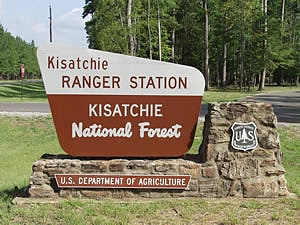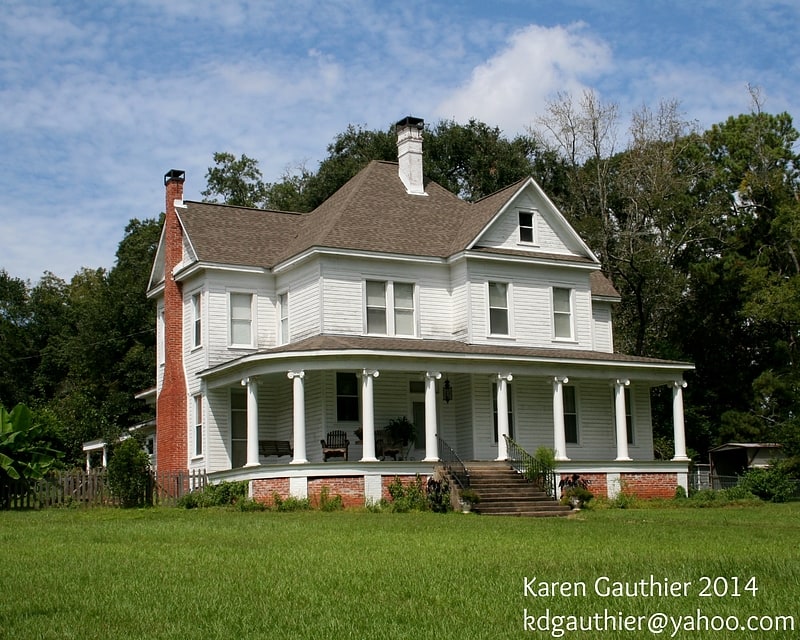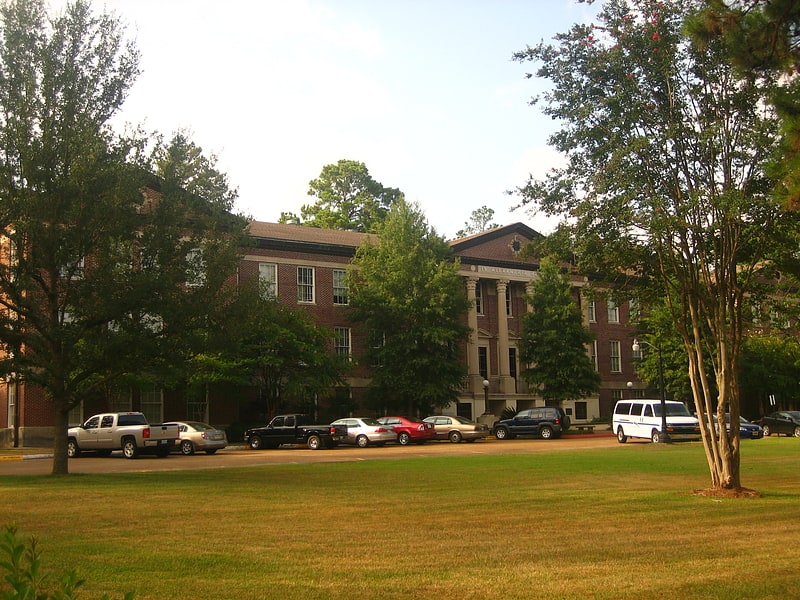Discover 4 hidden attractions, cool sights, and unusual things to do in Pineville (United States). Don't miss out on these must-see attractions: Kisatchie National Forest, Forts Randolph and Buhlow State Historic Site, and Cottingham House. Also, be sure to include Louisiana College in your itinerary.
Below, you can find the list of the most amazing places you should visit in Pineville (Louisiana).
Table of Contents
Kisatchie National Forest

Kisatchie National Forest, the only National forest in Louisiana, United States, is located in the forested piney hills and hardwood bottoms of seven central and northern parishes. It is part of the Cenozoic uplands and has large areas of longleaf pine forests. It is one of the largest pieces of natural landscape in Louisiana, with some 604,000 acres of public land, more than half of which is vital longleaf pine and flatwoods vegetation. These support many rare plant and animal species. There are also rare habitats, such as hillside seepage bogs and calcareous prairies. The forest also contains and provides a buffer for the Kisatchie Hills Wilderness, a nationally designated wilderness area that contributes to protecting biodiversity of the coastal plain region of the United States.
The forest was designated in 1930 during the administration of U.S. President Herbert Hoover.
Kisatchie National Forest plays an important role in protecting representative examples of the landscape of northern Louisiana, particularly those that fall within the South Central Plains Ecoregion. The forest protects habitat for a wide array of plant species, including wild orchids and carnivorous plants. Two examples include the pale pitcher plant and rose pogonia orchid. Biologists have found 155 species of breeding or overwintering birds, 48 mammal species, 56 reptile species and 30 amphibian species. Rare animals include the Louisiana pine snake, the red-cockaded woodpecker, the Louisiana black bear and the Louisiana pearlshell mussel.
The forest also offers recreation activities including: bird watching, photography, backpacking, canoeing, all-terrain vehicle trails, boating, camping, cycling, fishing, hiking, horseback riding, hunting, mountain biking, picnicking and swimming. The forest has more than 40 developed recreation sites and over 100 miles (160 km) of trails for hiking, mountain biking and horseback riding.
Kisatchie National Forest contains two significant roadless areas, established to protect native species: Cunningham Brake and Saline Bayou. Cunningham Brake is a large cypress-tupelo gum swamp that also protects flows in Kisatchie Bayou. Saline Bayou has mixed forests associated with alluvial habitats, ranging from shortleaf pine to tupelo gum. Roads are known to cause significant damage to forests, prairies, streams and wetlands. Roads are particularly harmful to native populations of amphibians and reptiles that migrate to vernal pools. A third large roadless area, the Kisatchie Hills, is protected under a different designation, as a National Wilderness Area. More information of these important areas can be found in the Final Environmental Impact Statement for Kisatchie, prepared by the Forest Service in 1999.
Although forests dominate the landscape, scattered prairies can also be found. Natural prairies have been almost extirpated from Louisiana, mostly by clearing for agriculture. Less than one thousand acres of calcareous prairie may remain in the entire state, three pieces of which are associated with Kisatchie: the Kieffer prairie (769 acres), the historic Tancock Prairie (45 acres), and the historic Bartram Prairie (1,190 acres). The latter two are referred to as "historic" because they were mentioned in 1836 survey records; they have reverted to forest.
So thoroughly have the prairies of North America been cleared that remnants such as these are likely to be of national significance. The restoration of a natural fire regimen is the most important priority for maintaining and enhancing these prairies.
The forest consists of several large areas; and these are fragmented by private land ownership. The headquarters are in Pineville, but the Kisatchie National Forest has five ranger districts in the north-central area of the state: Calcasieu, Caney, Catahoula, Kisatchie and Winn. The forest lies in parts of seven parishes. In descending order of land area within the forest, they are Grant, Natchitoches, Winn, Rapides, Vernon, Claiborne, and Webster parishes.[1]
Forts Randolph and Buhlow State Historic Site

Historical place museum in Pineville, Louisiana. Forts Randolph and Buhlow State Historic Site in Pineville, Louisiana, a state historic site in Louisiana consisting of Fort Randolph and Fort Buhlow. Both of these forts are in the National Register of Historic Places.[2]
Address: 135 Riverfront St, 71360 Pineville
Cottingham House

Cottingham House is located in Pineville, Louisiana. It was added to the National Register of Historic Places on September 8, 1987.
The house was built in 1907 for Dr. and Mrs. Claybrook Cottingham. Dr. Cottingham was one of three faculty of Louisiana College; he served as president of the college from 1910 to 1941. According to its NRHP nomination, the house's "impressive size and multi-gable roofline marks it as the distinctive landmark among Pineville's earliest surviving period of residential architecture."[3]
Louisiana College

Alexandria Hall-Louisiana College is a Classical Revival structure built in 1920, located in Pineville, Louisiana. Alexandria Hall was named to honor the people of Alexandria, Louisiana.
Alexandria Hall was added to the National Register of Historic Places on May 15, 1986.[4]
Address: 1140 College Dr, Pineville